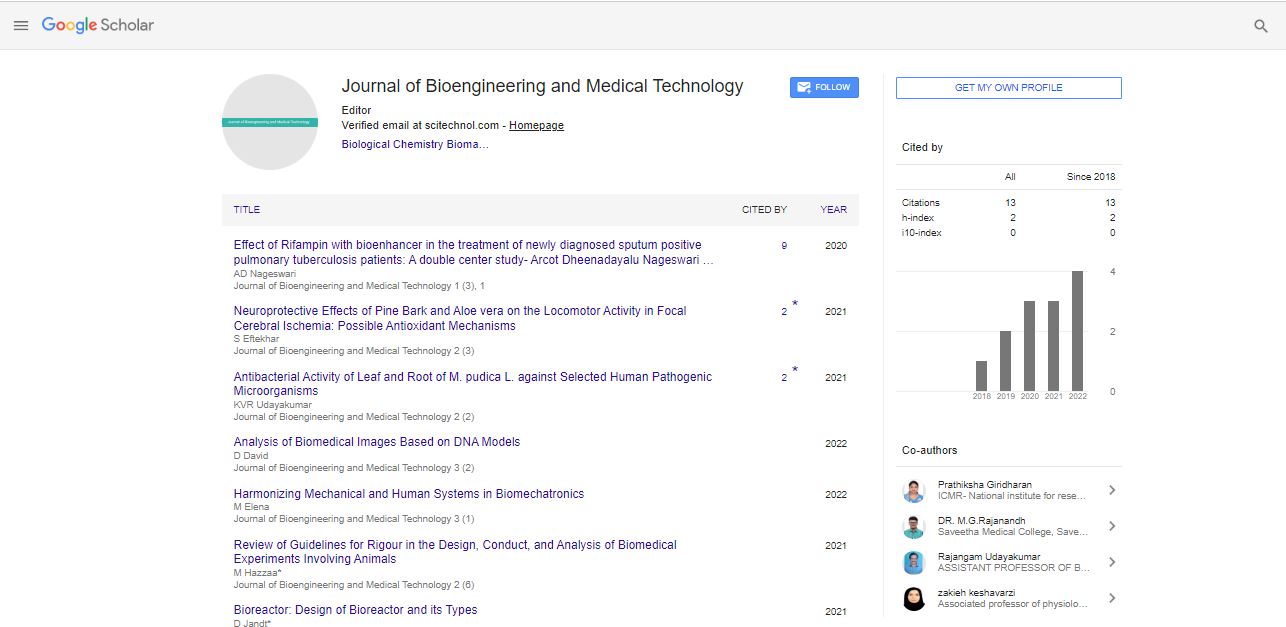Short Communication, Jbmt Vol: 2 Issue: 4
Identification of potential early biomarkers of aortopathy
Introduction: Bicuspid aortic valve is the most common congenital heart disease and in approximately 50% of cases it is associated with aneurysms of any or all segments of the aorta. Ascending aortic aneurysm is responsible for 1%-2% of all deaths in industrialized countries and poses a challenge on the growing and aging society. Although aortic aneurysms are generally benign, a progressive increase in their diameter can lead to catastrophic and fatal event of acute aortic dissection and aortic rupture. Comprehensive genetic, molecular and proteomic analyses have increased our understanding of the complex cellular processes and signaling involved in the pathophysiology of ascending aortic aneurysms. To support the two known hypotheses proposed to explain the causality in aneurysm formation, intrinsic factors related to vascular remodeling were further investigated and analyzed in patients with congenital BAV and Marfan Syndrome (MFS). In MFS, mutations are present in the gene encoding for the extracellular matrix protein fibrillin-1, which causes the dysregulation of transforming growth factor-beta signaling. The second hypothesis proposes a weakening of the aortic wall by steady laminar shear stress caused by the malformed BAV. This theory is supported by the asymmetrical extracellular matrix protein expression patterns and vascular smooth muscle cell apoptosis within the proximal BAV aorta, indicating shear stress-induced changes at certain sites.
Abstract
Bicuspid aortic valve is the most common congenital heart disease and in approximately 50% of cases it is associated with aneurysms of any or all segments of the aorta. Ascending aortic aneurysm is responsible for 1%-2% of all deaths in industrialized countries and poses a challenge on the growing and aging society. Although aortic aneurysms are generally benign, a progressive increase in their diameter can lead to catastrophic and fatal event of acute aortic dissection and aortic rupture. Comprehensive genetic, molecular and proteomic analyses have increased our understanding of the complex cellular processes and signaling involved in the pathophysiology of ascending aortic aneurysms. To support the two known hypotheses proposed to explain the causality in aneurysm formation, intrinsic factors related to vascular remodeling were further investigated and analyzed in patients with congenital BAV and Marfan Syndrome (MFS). In MFS, mutations are present in the gene encoding for the extracellular matrix protein fibrillin-1, which causes the dysregulation of transforming growth factor-beta signaling. The second hypothesis proposes a weakening of the aortic wall by steady laminar shear stress caused by the malformed BAV. This theory is supported by the asymmetrical extracellular matrix protein expression patterns and vascular smooth muscle cell apoptosis within the proximal BAV aorta, indicating shear stress-induced changes at certain sites.
 Spanish
Spanish  Chinese
Chinese  Russian
Russian  German
German  French
French  Japanese
Japanese  Portuguese
Portuguese  Hindi
Hindi 
